What is a Bernedoodle?
Introduction
I am the proud owner of the F1B mini Bernedoodle in the picture above 🙂 They are a cross between a Bernese Mountain Dog and Poodle. Previously we owned a Bernese Mountain Dog, but mainly because of its short life-span, we decided to purchase a Bernedoodle dog. Not only they’ve got an amazing coat, but their character is also great.
But before you are even thinking of purchasing a Bernedoodle, there are some things to consider. This guide will give you all the information you have to know, including topics like Origin, Personality, Care, Characteristics, Coat, Size, and Health. So stay tuned!
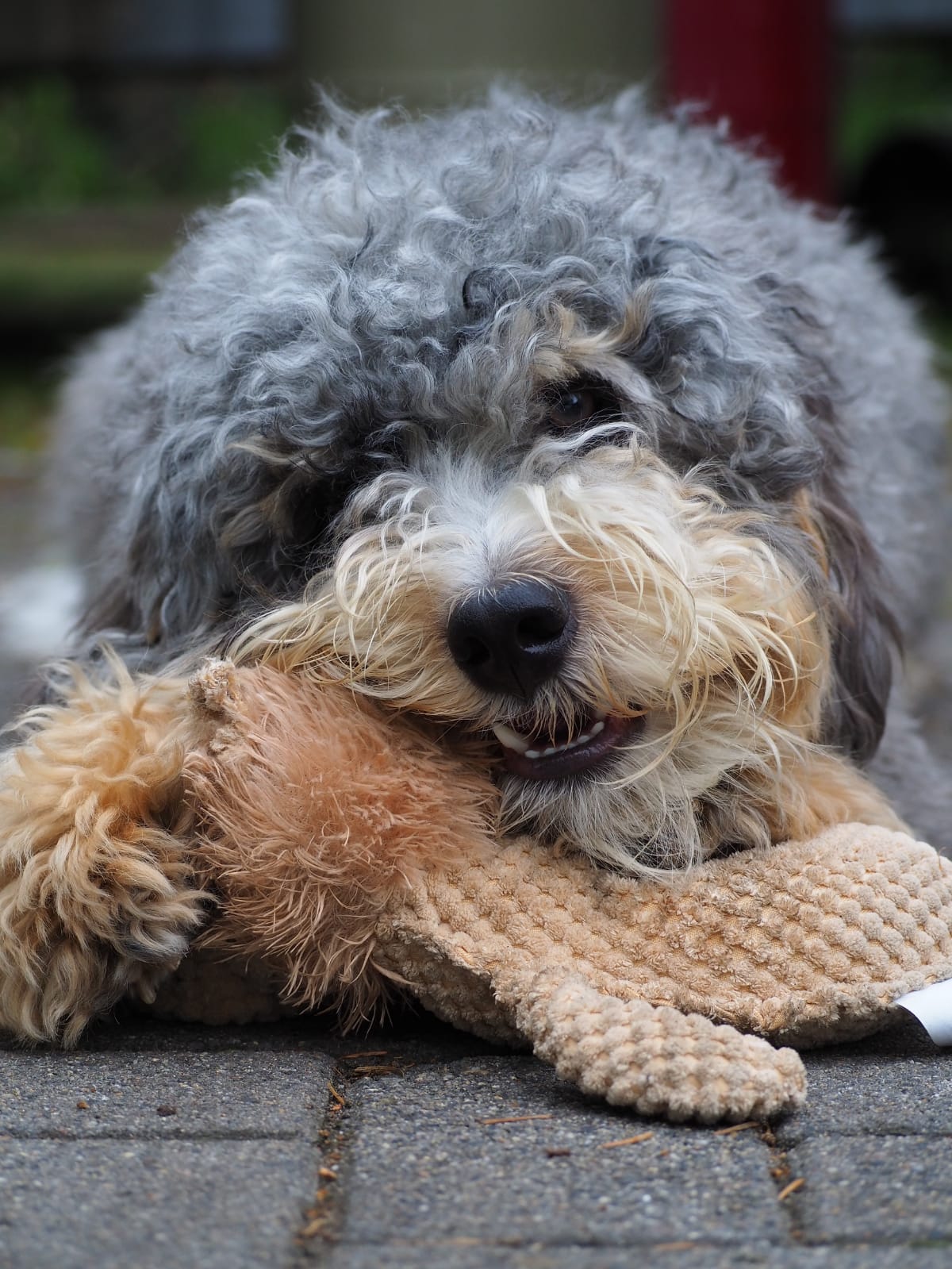
Origin of Bernedoodle dogs
First I want to tell you something about the origin of the Bernedoodle. This mixed-breed was developed by crossbreeding two successful purebred dogs, the Bernese mountain dog, and the Poodle. The Bernedoodle inherited its lovely traits from its parents.
Although it is believed that breeding of the Bernese mountain dog and Poodle occurred long ago, the first intentional breeding was first done in 2003. At the time, Sherry Rupke from Swissridge Kennels wanted to produce a dog with the Bernese Mountain dog’s lovely character, combined with the low-shedding coat of the Poodle. Since then, the breed has become very popular in the USA and abroad. However, there is still not that much information available on the internet. Although it’s a very new mixed-breed, its parents are relatively ancient breeds. I will discuss these breeds briefly.
Poodles
Poodles are waterdogs that trace their origins to Germany and France. They are brilliant dogs that are very dedicated to their owners. This dog is ranked as the second most intelligent dog breed. They are delicated show dogs.
Bernese mountain dogs
Many people will associate Bernese Mountain dogs with their large size and beautiful colors, their calm temperament, and the fact that they do not require extensive training. Although this is true, not everyone knows about the interesting origin of this breed. These dogs originated from the Swiss Alps and where they were used as all-around farm dogs. They pulled carts and guarded farm properties. This because they are generally handy and loyal working dogs.
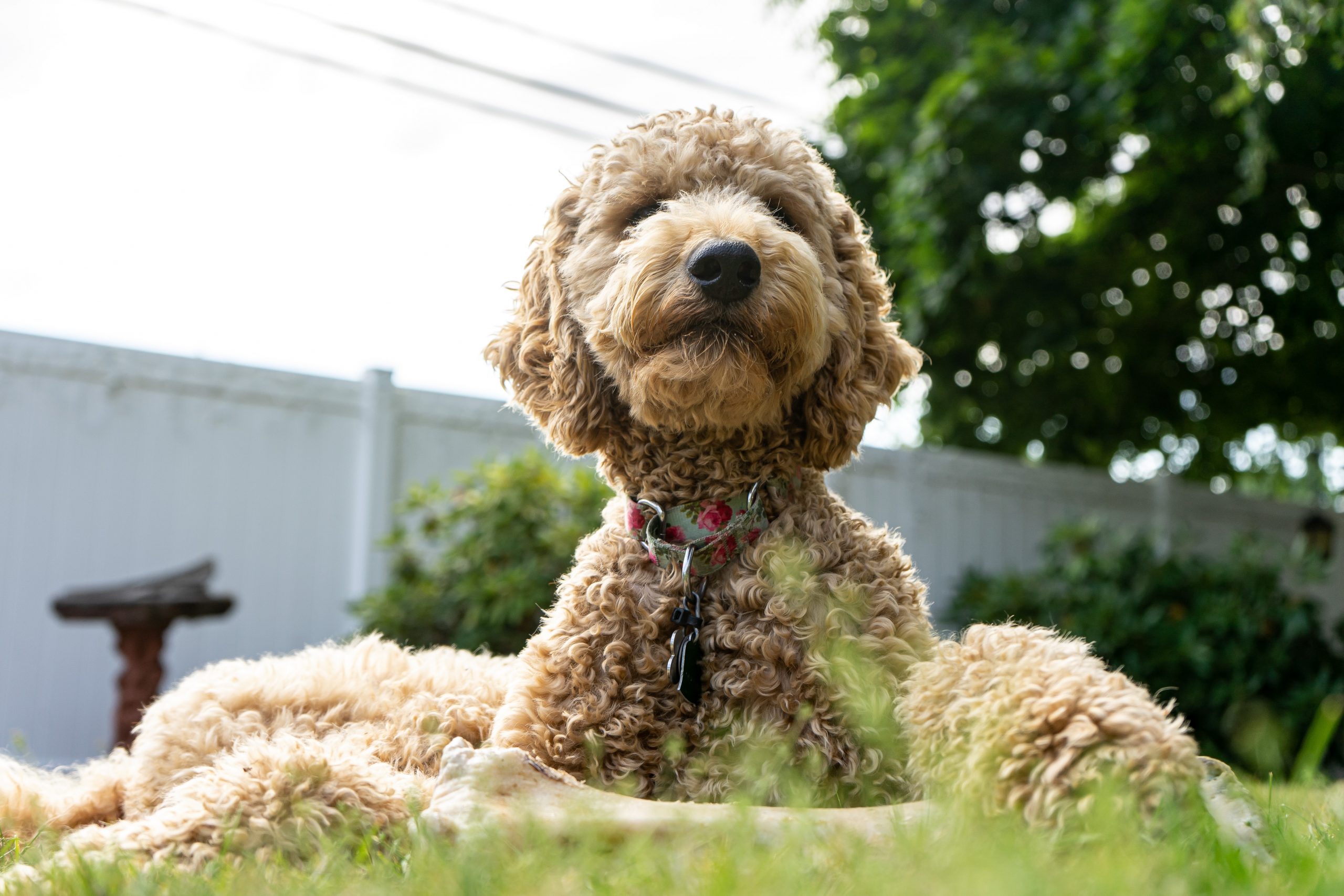
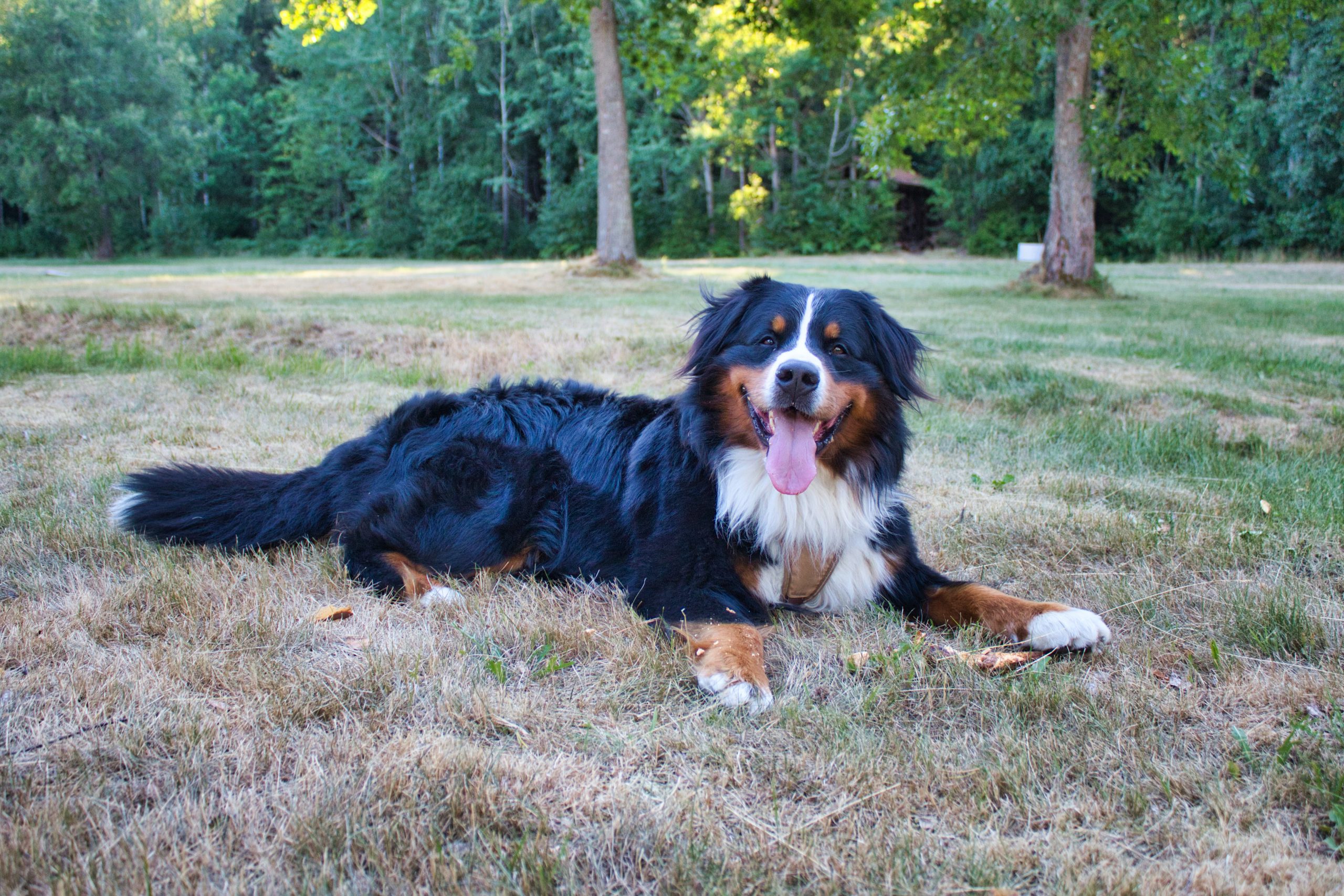
While inherited traits can vary, many owners report these dogs’ breeds as having high intelligence and loyalty and usually love having fun with people. Bernedoodle dogs are good with children as long as they have been appropriately socialized; thus, they are exemplary as family pets.
One of the negative traits from parents is the stubbornness that is got from the Bernese mountain parent. This usually disappears with time. It is predominant in puppyhood and is generally eliminated by proper training.
Socialization is crucial as the Bernedoodle can be a little wary of strangers, and you don’t want the dog to unleash its aggression on a visitor. The smaller Bernedoodle usually has significant energy levels. Thus they regularly need physical activities. They are generally happy to join you on your morning hike or jog.
The level of exercise you should give them depends on the size. Generally, smaller dogs are more active as compared to larger dogs. A good walk is a must for optimal health, but you don’t need to engage them in vigorous and intense workouts.
They can also be involved in mental workouts, which is usually critical in ensuring they are tired to reduce destructive behaviors at the end of the day. You can offer mental stimulation by giving them puzzle toys and engaging them in interactive sessions.
Bernedoodle dogs can usually fit anywhere, and they are social dogs that love being around people. Separation anxiety can be an issue that is typically due to poor socialization; thus, it’s critical to begin the path of crate training at a young age. This gives your dog a chance to have a better place to retreat to when it feels anxious.
With this in mind, the Bernedoodle dogs usually feel safe and enjoy being left home alone for extended periods. The small miniature dogs can be okay with apartments, while the larger ones are better with more extensive and spacious houses with a large garden.
Caring for Bernedoodle dogs
Tiny and miniature Bernedoodle dogs are well suited to apartment life compared to the larger dogs, which require a sizeable yard to run around. These dogs usually don’t need a lot of personal space. They aren’t destructive if their mental and physical stimulations are met.
Bernedoodle dogs usually like being with people; thus, the less time they spend alone, the better. These dogs are quite intelligent; therefore, they can quickly learn both bad and good habits. It is imperative to continue training your dog to ensure that it does not develop bad habits.
It is beneficial to socialize your dog and expose it to humans and other dogs early enough to optimize its behavior when meeting strangers or other pets.
The feeding of Bernedoodle dogs is usually individualized. Feeding requirements typically depend on your dog’s size, age of the dog, and activity level. Standard Bernedoodle dogs can gulp whatever food you put in front of them; thus, you should monitor their food intake and weight and provide optimal physical activity. You should ask an expert what kind of diet is recommended for your dog.
- A puppy should eat 3-4 times a day. The diet should be the ideal puppy diet.
- At six months, you should feed it two times a day.
- At one, your dog should consume the adult diet.
You must choose high-quality dog food for your dog. Generally, many people will prefer to mix dry and wet foods to optimize diet completeness. Nevertheless, raw feeding is also a popular option.
The most predominant ingredient is meat, as proteins are the most crucial nutrients for any dog. Preferably it would help if you fed your dog with around 20 calories per lb body weight.
As long as the Bernedoodle dogs are given plenty of playtimes and a decent walk, they are incredibly joyous. The dogs will usually enjoy hiking, jumping, running, and even swimming if they have inherited the Poodle’s love for the water.
Grooming the Bernedoodle dogs usually depends on their type of coating. If you have a Berdedoodle with a straight coat, you should at least brush them once a week. The non-shedding breed of Bernedoodle dogs is hypo-allergic but with more intense grooming requirements.
If your dog is curly or wavy, you need to brush it several times a week to reduce matting. You may also need to take them to groomers every couple of months to trim their coat.

Characteristics of the Berdedoodle dogs
Bernedoodle can have curly, wavy, or straight hair. Usually, the more the hair is curled, the more hypo allergic your dog is. The dogs have a dense and thick coat, with a harsh texture.
It can also have codes of varying lengths. The coating of this breed of dog allows it to be cool in the summer and protects it from extreme cold during the winter.
There are various colors: white, black, brown, black sable, black and brown, black and white, white and brown, blue, fawn, grey, apricot, cream, and tri-colored with black patches, white, and brown.
Bernedoodle has a square body with oval eyes that are dark and set far apart. Their ears usually hang close to their heads. They possess a long triangular shaped muzzle. Berdedoodle dogs have a bushy tail that is held high. Their pads are thick and cushioned.
These dogs are quite intelligent and are easily trained, especially when they are puppies. These dogs can also be mischievous and stubborn, especially when not properly trained. This determined character usually disappears with training; thus, it requires patience.
The following are some of the ratings out of five:
- Amount of shedding- One
- Drooling potential-two
- Easy of grooming-three
- General good health-four
- Potential for gaining weight-three
- Size- three
- Trainability –four
- Intelligence –five
- A tendency to bark-three
- Wanderlust potential-three
- Energy level- four
- Intensity-3
- Playfulness potential-five
source: dogtime
Berdedoodle dogs are social and extremely outgoing. They like being friends with people and dogs they meet. They can have puppy-like instincts for long before they finally settle down.
Bernedoodles are heavy chewers; thus, if you don’t provide them with enough chewing materials, they can start chewing your furniture, walls, and shoes. They always possess a strong desire to chew; thus, you should be ready to fulfill the appetite as the owner.
These dogs are great around children, and they will always enjoy their company with children. They love being around people, and thus if you don’t desire to share your house with a dog, you should not choose the Berdedoodle as they are not bound to be in kennels.

The coat of Bernedoodle dogs
Bernedoodle coat can be curly, wavy, or straight. With careful and controlled breeding, breeders can breed dogs with predictable coat types and shedding propensities. One of the things that people like about the Bernedoodle is its low tendency to cause allergic reactions and reduced shedding rates.
They also have a nice look. Some researchers have attempted to explain how gene coats can affect the appearance of a bernedoodle.
Bernedoodle dogs with wavy coats will have straight hairs on the muzzle that will be wavy for the rest of the body parts. This is one of the most favorite coat types. Bernedoodles with straight coats are covered with straight hairs all over the body.
Furnishings and improper coat.
Furnishing refers to the longer hairs on the face of the Bernedoodle, including the mustache and beard. They are found on most Bernedoodles. The short facial hair on Bernese mountain dogs is referred to as an open face.
The lack of furnishing is also called an incorrect coat. It is a dominant genetic disorder that can be shown by testing the parent dog’s genetic make-up. The genetic determination will establish whether the breeding will give rise to puppies that have furnishing or a likelihood of having puppies with incorrect coating.
The Bernedoodle with furnishing has less dominant shedding compared with those with incorrect coating. Thus, for this reason, if a member of your family has allergies, a furnished Bernedoodle is a better option as compared to that with an incorrect coating.
The straight coats usually shed the most but are the least hypo-allergic. Even though we refer to it as being straight, it might have some slight wave on it. The length will be dependent on the size of the parents’ hair.
The wavy or fleece coat can vary from low shedding to non-shedding and predominant coating on most Bernedoodles.
The curly coat is likely to shed the least and is the most hypo allergic coat. The curls on the hairs are usually soft textured and tight. This characteristic is inherited from the Poodle as most of them will have this kind of coating.
They will shed mainly on themselves rather than your floor, making it necessary to brush them daily and trim them frequently. This type of coat is ideal for people who have allergies to animal dander.
If you are not ready to deal with shedding, always remember that the curlier the coat, the less likely it will shed.
The size of Bernedoodle dogs
The size of Bernedoodle dogs varies quite a lot. I can say the dimensions of its parents, the Bernese mountain dog, and the Poodle have a hand in the sizes.
The Bernese Mountain dog is a large dog that can have a height ranging from between 20-23 inches and body weight ranging from 35-50 kg. Conversely, the Poodle comes in three sizes that are toy, miniature, and standard.
The above sizes of parents provide a bearing on the size of an adult Bernedoodle dog. Since Bernedoodle dogs are a crossbreed, predictions on maximum size are less accurate. If you wish to have a particular sized dog, its recommended that you consult about it.
A toy Poodle reaches ranges between 8-10 inches and can weigh around 5kg. A miniature Bernedoodle can mature at a length of between 11-15 inches in height and weighs between 6-9kg, and this cross produces a miniature Bernedoodle puppy.
A standard Poodle is the biggest among the breeds of Poodles, and its species produces the typical Bernedoodle puppy. The standard Poodle can reach a height of 20-23 inches and reach up to 25 kgs of body weight.
The Bernedoodle dog and health
Learning about Bernedoodle dog health is crucial as the dogs are likely to develop one or two of these health conditions during their lifetime. Some diseases can also be passed down from their parents, so it’s critical to always check on them.
Although crossbreeding will eliminate undesirable traits, it is sometimes impossible to get rid of all the alarming features, including diseases. The Bernedoodle is no different as they are predisposed to various health issues. Your vet is critical in diagnosing your pet’s current health and predicting illnesses that are likely to emerge.
There are both major and minor conditions that Berdedoodle dogs can develop or inherit from their parents. Usually, lab tests can be carried out on puppies and their parents to diagnose these diseases.
Although these diseases are mentioned, there are a few chances that the dog will develop these conditions, especially when you acquire your breed from a good breeder. More often, Bernedoodle dogs lead an everyday, healthy life.
Disease and their management
Hip dysplasia
Hip dysplasia primarily affects the larger sized breeds. Hip dysplasia is usually accompanied by pain. In this condition, the dog’s hip joint develops abnormally, leading to the hip joint’s inflammation in severe cases.
Pain accompanied by hip dysplasia usually limits joint movement; thus, the dog will experience difficulty walking. The pain will usually make the dog sit down abnormally or may not walk at all. To diagnose hip dysplasia, your vet will conduct a complete physical exam and do a hip x-ray.
Hip dysplasia is managed by anti-inflammatory drugs, physical therapy, and joint fluid modifiers. Severe disease may require surgery.
Elbow dysplasia
Elbow dysplasia usually affects large breeds. Elbow dysplasia is more painful and complicated as compared to hip dysplasia. Bernedoodle dogs can develop this condition in the course of their life or inherit it from their parents.
Diagnosis requires a CT scan or an MRI for a conclusion. Treatment of elbow dysplasia requires surgery or physiotherapy treatment. The dog is also required to undergo several rehab stages to recover fully.
Color Dilution alopecia
It is a skin disease that can lead to the loss of hair from various body parts. Your dog can also suffer from itching, broken hair, or flaky skin cover. Color dilution is a heritable condition. The dermatohistopathology test diagnoses it.
Color alopecia has no cure, but you can control the symptoms using antibiotics, vitamin A and essential fatty acids.
Hyperadrenocorticism
It is known as Cushing’s disease. Cushing’s disease is related to cortisol hormone, which is critical in getting rid of stress and immune response modulation. Excessive cortisol in hyperadrenocorticism causes neurologic abnormalities and infertility.
There is also increased hunger, increased urination, thirst, and excessive weakness. It’s diagnosed with the ACTH stimulation test and low dose dexamethasone test. Cushing’s syndrome is managed by surgery.
Von Willebrand disease
Von Willebrand’s disease is caused by the deficiency of the von Willebrand factor. The condition results in excessive bleeding from the nose, gums, and minor injuries. A buccal mucosal screen test diagnoses it.
For management, emergency cases require a blood transfusion. Von Willebrand’s disease can be managed by aspirin, ibuprofen, and penicillin.
Other medical conditions affect bird doodle dogs. These diseases include
- Cataract
- Epilepsy
- Progressive retinal atrophy
To reduce the burden of these health issues, it’s prudent to carry out some genetic tests before getting your Bernedoodle.
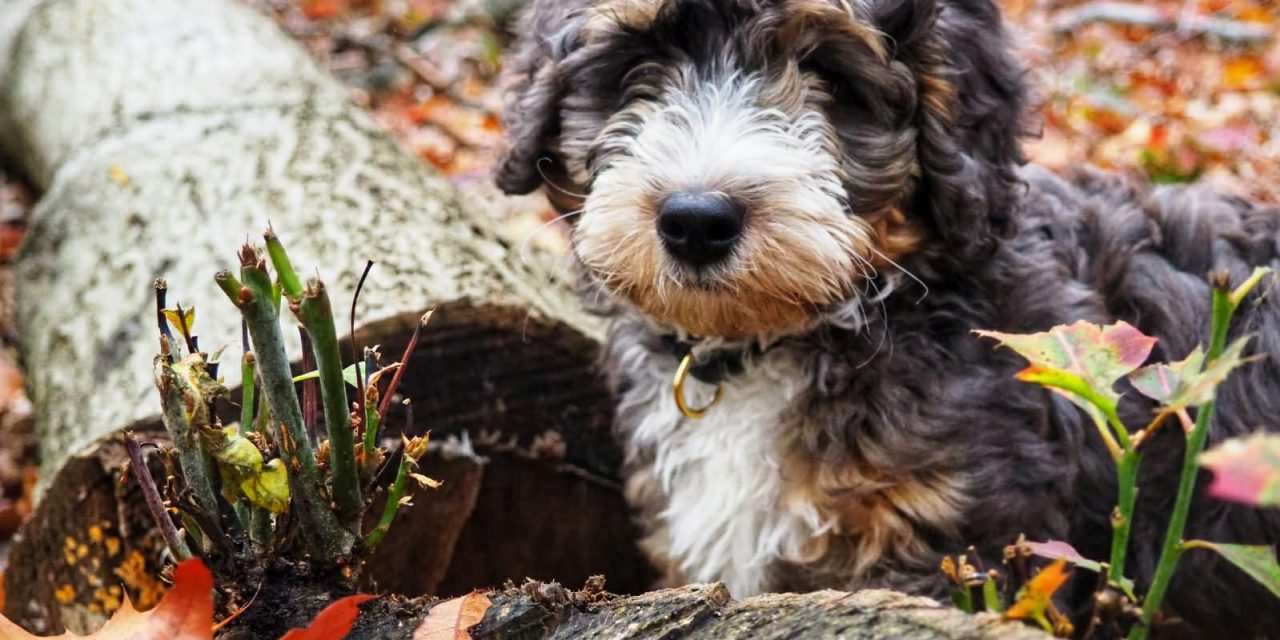
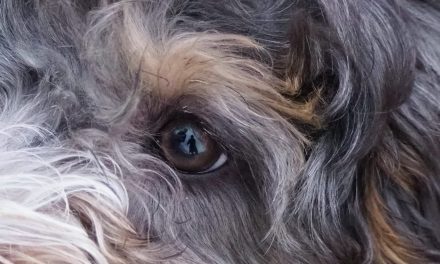
Recent Comments